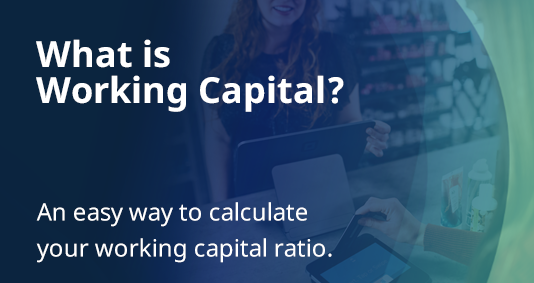
What is Working Capital?
Learn more on how to understand and calculate your working capital ratio.

Learn more on how to understand and calculate your working capital ratio.
Working Capital can also be referred to as net working capital (NWC) and be used to measure the financial health of a company, as well as give the company, its advisors and potential investors an indication as to its liquidity and operational efficiency. A company needs working capital in order to be able to invest in itself and to grow. If a company does not have enough working capital, it may struggle to pay its liabilities as they become due or may even find itself at risk of becoming insolvent.
Keep reading our blog post, written in collaboration with our partner 365 Business Finance*, to learn more!
The standard working capital formula to remember is the company's assets minus its liabilities equals working capital.
To determine how to calculate the working capital in more detail, compare a company's current assets, as listed on its balance sheet, to its current liabilities. The current assets you can expect to find will include all those which the company expects to be able to liquidate or turn into cash within one year period, such as inventories of raw materials and stock, cash and accounts receivable from clients or customers.
From the total of these assets, you need to deduct the total of all current liabilities. Current liabilities - like current assets - also refers to those liabilities which will be due within one year period, including taxes, wages payable by the company, accounts the company is liable to pay and a proportion of any longer-term debt.
A company will generally be looking to maintain working capital in line with what is usual for companies in the same industry sector of a similar size. Usual working capital levels will vary from industry to industry. A higher working capital value is not necessarily desirable, because if it is too high it can indicate problems with a company holding excessive inventory or failing to make its cash work hard by using it for investment in growth and development.
Working Capital Example: 365 Business Finance has seen that to calculate working capital, they need to deduct current liabilities from current assets. If a company's current assets are £150,000 and its current liabilities are £100,000, the working capital is £150,000 less £100,000 which amounts to £50,000.
The working capital ratio is the ratio between current assets and current liabilities. Ideally, in the opinion of many experts, a company should aim for a working capital ratio of around 1.2 to 2 although this will vary. If the ratio is less than one, the company has negative working capital. Positive working capital, on the other hand, means that the company has the means to carry on its business and also invest for the future.
*365 Business Finance are a financial provider that offer merchant cash advances to small and medium-sized businesses across the United Kingdom. A merchant cash advance is designed as a quick way for businesses that accept credit and/or debit cards to raise capital without the need for a bank loan or hefty overdraft.